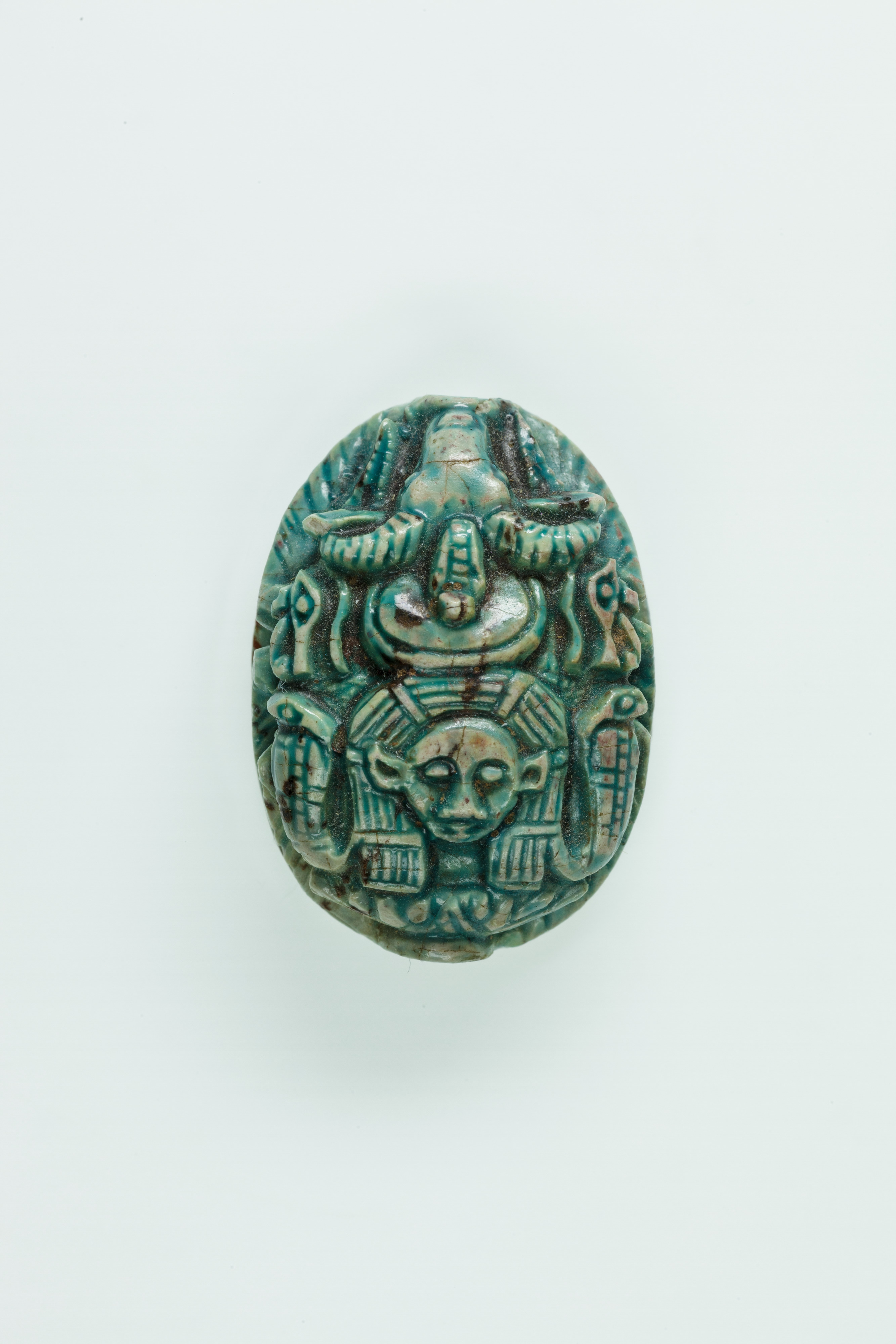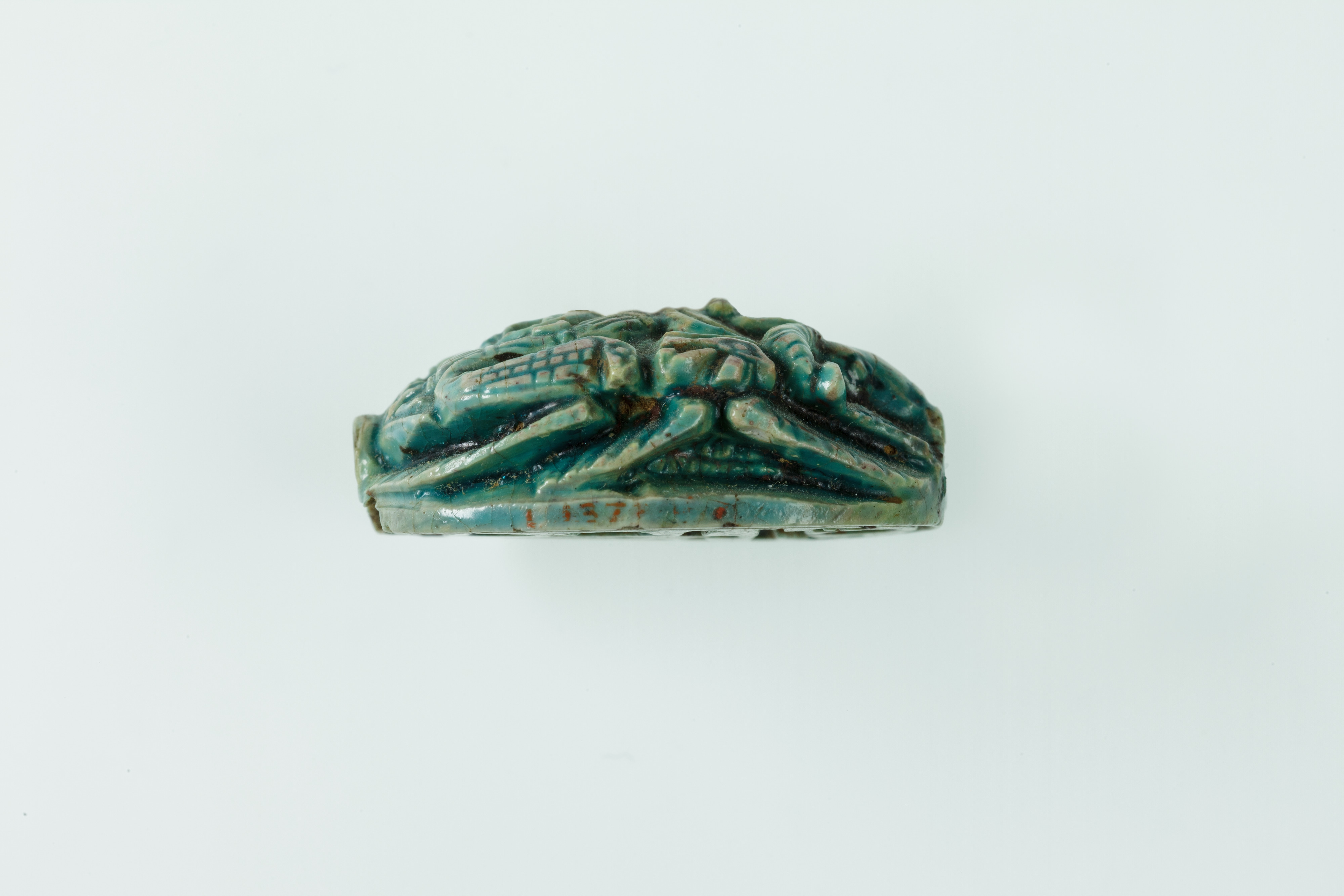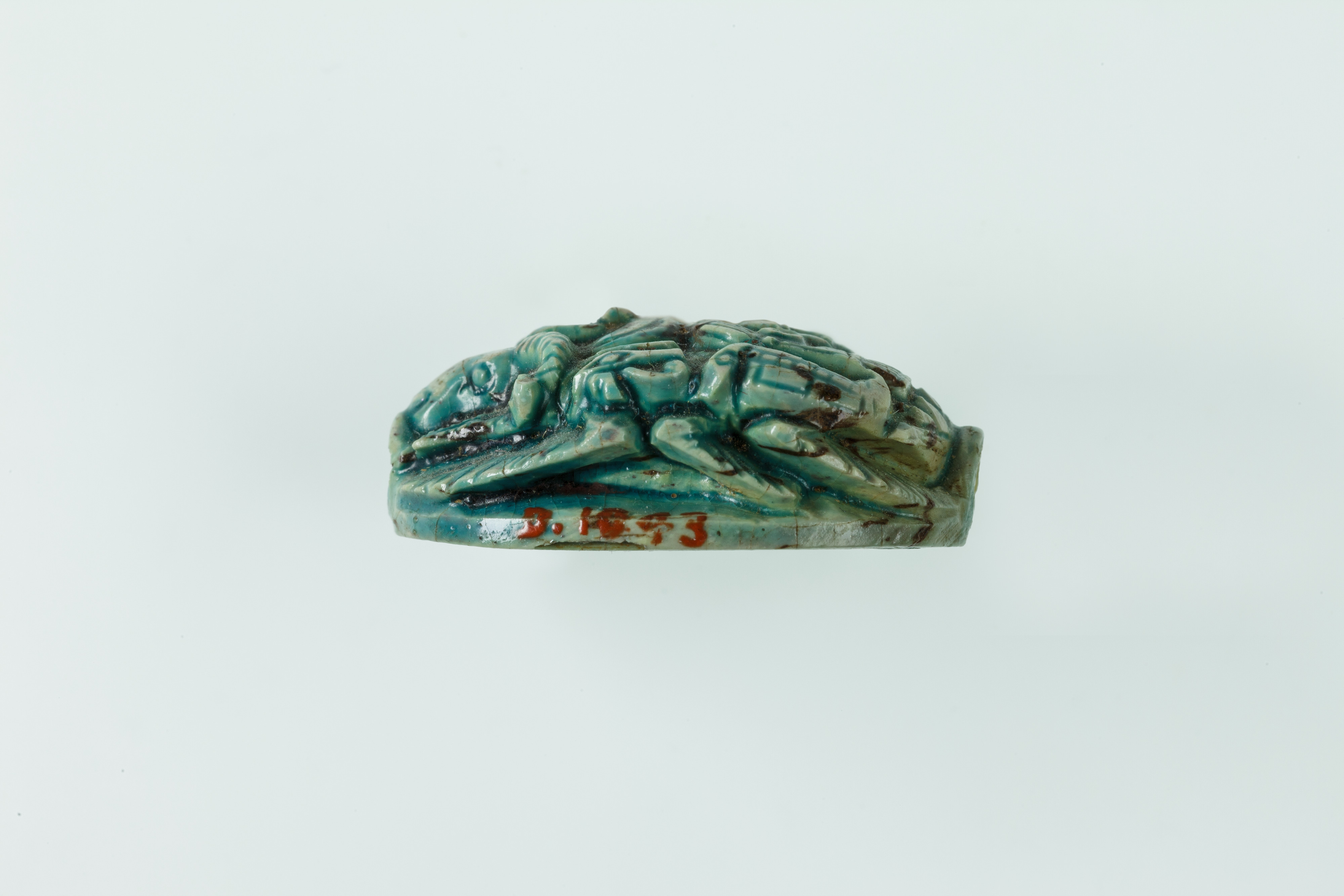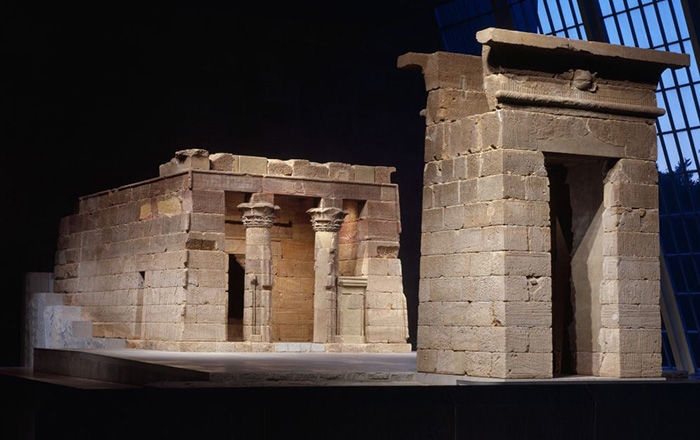Ram-headed Scaraboid Inscribed with a Blessing Related to Amun (Amun-Re)
Third Intermediate Period
This scaraboid calls for protection by the sun god Amun or Amun-Re, referred to by an image of the solar barque. The hieroglyphic inscription reassures the owner that there is no fear when the sun god offers protection. Scarabs bearing wishes and blessings related to divinities whose protection individuals wished to summon were particular popular during the late New Kingdom and the Third Intermediate Period (ca. 1295–664 B.C.).
One side of the back is decorated with a finely carved head of a ram – the animal of the sun god Amun – with a sun disk between its horns and a uraeus (rearing cobra) on its forehead. On either side are wedjat-eyes, symbolizing well-being and health. The face of the cow goddess Hathor, wearing an elaborate wig, is placed on the opposite end between a pair of uraei. She emerges from a lotus flower. This type of ram-headed amulet is particularly popular during Dynasty 25.
Both the inscription and the ram invoke solar symbolism, also suggesting that the Hathor image is to be understood in this context and thus perhaps refers to Hathor as the Eye of Re.
This image cannot be enlarged, viewed at full screen, or downloaded.
This artwork is meant to be viewed from right to left. Scroll left to view more.





